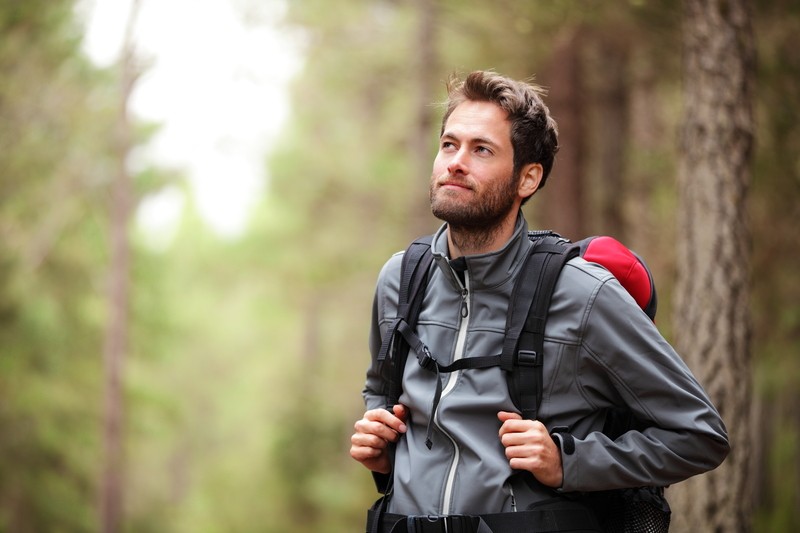How many survival kits do you currently have? Do you have various kits for different time frames? Learn what you can do below to test out your kits and make sure they're up to par. See what this military woman learned while testing her 72 hour kit in the great outdoors:
1. Emergency fire starters are not fast fire starters. I tried out the magnesium block with flint that is available from many stores. You know the ones – use your knife to shave off some metal shavings, then use your knife on the flint to create sparks to ignite the shavings/dust. This takes some time to get going. You may have better luck with firestarters with built-in ignition or this fire making system.
2. Bring required medicines. On my first trip, I forgot my allergy medicines. Since I’m allergic to dust, this made the weekend of desert living rather miserable. I brought the medicine on the second trip and life was good.
3. Gloves are important. Even the $2 gloves from Harbor Freight are useful, but they don’t last very long. I use the gloves to sheath my scissors (see next lesson) and to protect my hands from wood splinters.
4. Solid fuel stoves will not heat a pint of water to a rolling boil in 8 minutes, despite the claims by the manufacturer. It will get pretty hot, though, almost to the boiling point. Your altitude will definitely affect this.
5. A shemagh is a great pillow case (for my new inflatable pillow).
6. Shemaghs help keep you warm at night and cool in the day.
7. A folded shemagh can be used to protect your dromedary pack from any sharp items (scissors) in your pack.
8. Two person tents aren’t – unless both people are small. My two person tent is barely big enough for me and my backpack. However, it is light and works well in the desert to keep the crawling, stinging critters out. Speaking of crawling, stinging things, you do keep your pack inside the tent, right? Last thing you want is to find a grumpy scorpion when you put on your pack.
9. Water consumption will approach 2 gallons per day in the desert in the sun, but can be as low as 3 liters per day in the winter, even with the same activity level.10. Transpiration bags need to be large and secured with paracord. Tape will release in the sun and you will lose your collected water.
11. Wrapping a full day of MRE’s in two sheets of newspaper gives you fire starter and segregates your food into thoughtful daily selections. (Hint: You need to prepare all your MRE’s this way ahead of time.) Wrap the newspaper with a rubber band. I used duct tape the first time, but this creates waste that cannot be burned.
12. Setting up camp takes longer than you think unless you’ve done it several times. Add an hour or two if this is your first time. Allow ample time to find a suitable place to pitch your tent. Pitching your tent in a wash is double stupid – they are cooler and attract animals, and are subject to flash floods.
13. Bring small tubes of sunblock and Lansinoh. Sunblock prevents burns and the Lansinoh is used to treat rashes and blisters. The Lansinoh company promotes HPA Lanolin as a breast-feeding aid, but it works well on chafed skin. A floppy hat protects the scalp and ears.
14. Pack an army surplus poncho. 360 days of sunshine, and I was out in the rain on one of the 5 days it rains in Arizona. Glad I had my poncho. The poncho will keep you mostly dry but is like a windbreaker for warmth.
15. Minimize your cooking utensils. I have a pair of chopsticks, a spoon, and my Leatherman/skinning knife. I also have my bowl and the handle for it when it’s hot. REI sells lots of neat mess kits. Most of them are superfluous and just add weight to your pack. Ditch the extras and keep it simple.
16. You need to build your stamina and cardiac condition on a daily basis to survive an evacuation. Walk/hike with a fully loaded pack. This form of preparation ensures you can carry your pack and survive. In case of a disaster, FEMA will not even make a decision to assist for several days and once they decide to move, it will take a few more days before you will see their personnel. CERT/FEMA advertise that delay is likely to be 7 days. Count on being on your own for at least 3 days, hence the name “72-hour kit.”
The writer of this post, Varian Wrynn tested out her 72 hour kit on two separate occasions. This is incredibly important because as prepared as you are, how do you really know what you will need unless you are in a situation that requires it? Setting up “drills” like this will help ensure you are prepared and that your bags are fully equipped with the essentials. To read her complete article, check it out here at Survival Mom.
